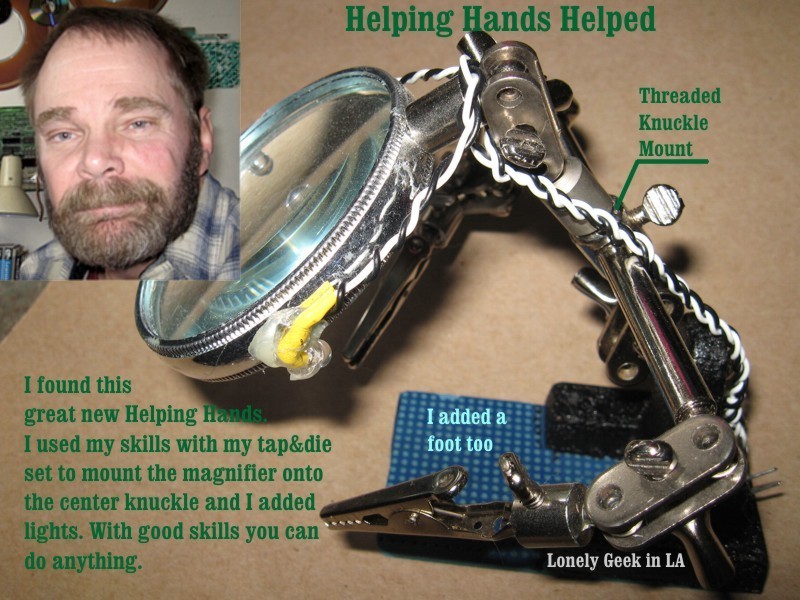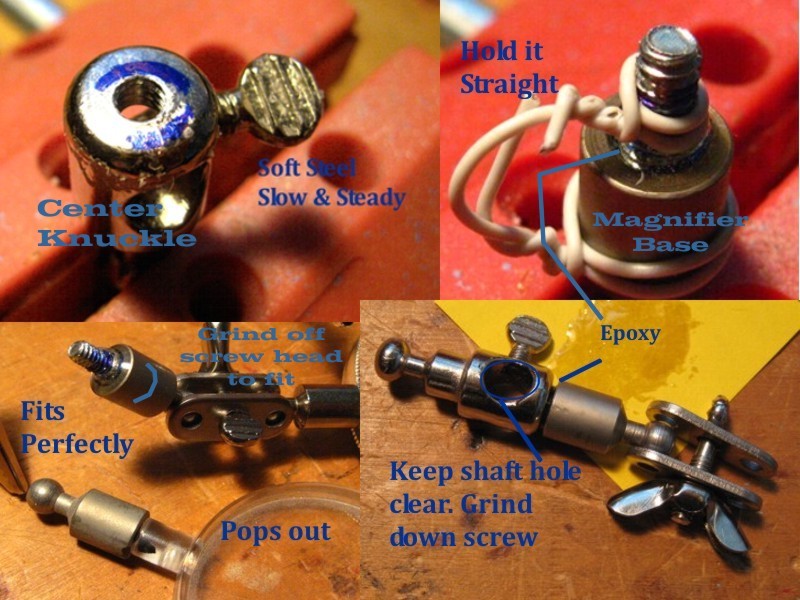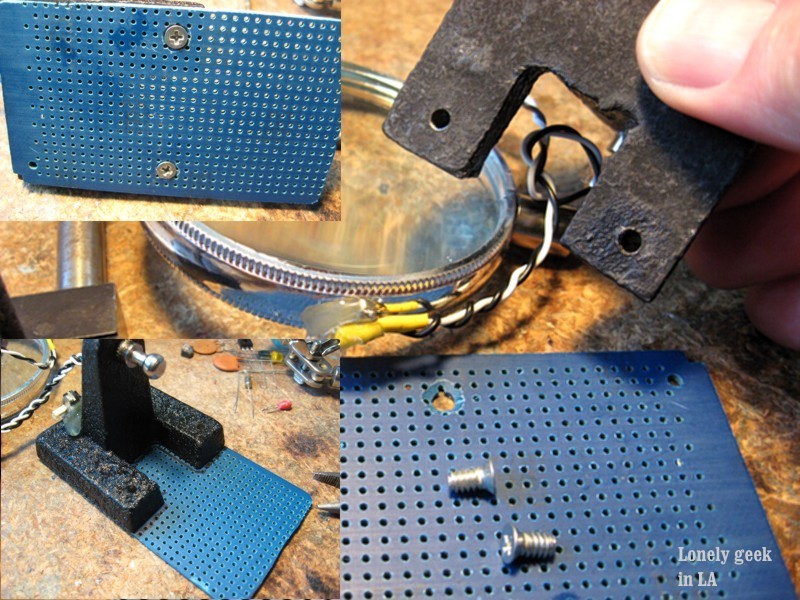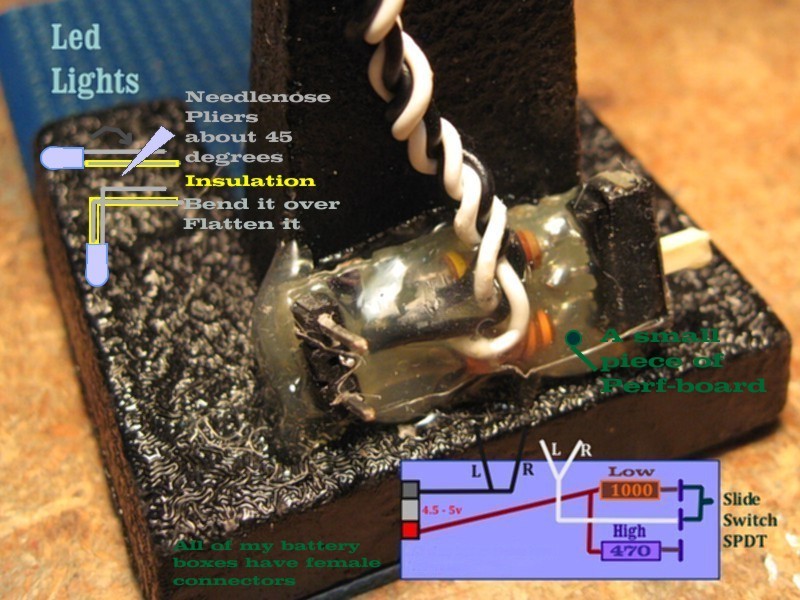I just picked up the latest Helping Hands basically because it had a nice big clear magnifier. My old Helping Hands had dull little useless magnifiers. I wanted the magnifier to be on the center knuckle. Here is where experience with tools comes in. I did not want to use up too much time with another new toy. I have my Dad’s tap & die set and I have used it many times without good results. I did learn a few things along the way.
As soon as I began to drill my hole into the top of the knuckle I found it was soft steel. How do you tell? The stuff that comes out with the drill is dull and evenly coarse. The drill also vibrates a little as the chunks of metal are broken off. My drills are just fine. They are a new set of drills and bits. Tapping soft steel is a bear. If the tap is just a little off center you will break off the threads as you are cutting them. This is where skill comes in.
When you are drilling soft steel you back the drill out often to clear the hole and brush away the bits. When you tap soft steel you go very slow as you get started to make sure that the tap is square. The force needed is a bit harder as you cut the threads. The force should be even all the way around. I go all the way around and then back up about a third of a turn to clear the tap. If it doesn’t feel right I back out the tap and check how I am doing. I find that just like the drill it vibrates just a little. No curls come out. You have to feel how your tool is working and check your progress often.
I find that it is safer even if your part is small to lock the part in a vise or vise grips, because tapping even a small hole takes a decent amount of force. With good steady force you get good clean threads. Uneven force and you get poor threads. Practice helps with taps and dies.
I completed my tapping just fine. Because the knuckle was soft steel I epoxied the magnifier onto the knuckle. It screwed in just fine. Then of course my helping hands fell forward. I had to install a foot. The base of the helping hands is even cheaper steel than the knuckle. Ugly drilling and horrible tapping. It looks great, though. That is the point of learning to use your tools effectively, so little instant projects with a new toy doesn’t ruin your weekend.
The LED lights came out of another purchase of toys that I hadn’t done anything with yet. I found that again experience had taught me about shiny chrome-plated plastic and how hot glue does not stick to it unless you know some tricks. The trick? With a small glob of hot glue heat up the plastic for a minute or so with the hot glue gun tip. Then dig the tip into the shiny chrome-plated plastic until it catches a little. You have to break the surface a little so that the hot glue has something to bond to. The heat has to get in there too for a more permanent bond. Patience helps because, just as with soldering, you have heat up both parts so that the solder or hot glue flows onto the parts and that creates a good bond.
The way I bent my LED leads is simple. Insulate the positive lead of the LED with some small tubing all the way to the base of the LED. That is the longer lead or the lead opposite the flat spot on the LED. Grip the LED leads with needle-nose pliers at about a 45-degree angle. See the picture. Bend the LED leads over the pliers to form a 90-degree bend. Crimp the bend so that it is flat. Give enough room for movement of your LEDs.
Experience with your tools and techniques makes projects fun.









